The start of a new year brings a palpable sense of renewal and possibility. For many, it symbolizes a clean slate, an opportunity to set goals and envision brighter days ahead. This period often fosters a collective optimism, as individuals and organizations focus on potential achievements and minimize thoughts of obstacles. This mindset is deeply rooted in human psychology, specifically in a phenomenon known as optimism bias. It is a cognitive tendency to overestimate the likelihood of positive outcomes while underestimating the chances of failure or difficulty. In both personal and professional contexts, this bias becomes particularly pronounced at the start of a new year, shaping decisions, ambitions, and strategies. While optimism bias can inspire creativity and drive, it also has the potential to lead to costly misjudgments, especially in the realm of business.
In the business world, optimism bias can manifest in bold initiatives, strategic expansions, or innovative projects, often launched with great enthusiasm at the start of the year. Leaders and teams might project growth, introduce new products, or enter unexplored markets with confidence fueled by this bias. For example, the optimism that accompanied Google Glass in 2013 reflects how companies can sometimes overestimate market readiness for disruptive technologies. Despite Google’s confidence in its groundbreaking innovation, the product failed to gain widespread acceptance due to privacy concerns and functionality limitations. Similarly, during the dot-com boom of the late 1990s, countless startups entered the market with high hopes, only to falter when unrealistic projections collided with harsh economic realities.
However, optimism bias is not inherently detrimental; in many cases, it acts as a powerful driver of progress. Entrepreneurs, in particular, rely heavily on this mindset to navigate the uncertainty and risk that accompany new ventures. Without a belief in the possibility of success, many would not dare to innovate or compete in challenging markets. Take Tesla, for instance. In its early years, the electric vehicle company faced skepticism, financial struggles, and logistical challenges. Yet, Elon Musk’s unwavering optimism in the viability of electric cars propelled the company to global prominence, revolutionizing the automotive industry. This example underscores how optimism bias can fuel resilience and long-term vision, enabling businesses to overcome hurdles that might otherwise seem insurmountable.
Optimism bias can also benefit organizational culture. When employees feel hopeful about the future, they are more likely to engage with their work, collaborate effectively, and innovate. This effect can be seen in companies that foster positive work environments and set ambitious but achievable goals. For example, Salesforce’s success as a pioneer in cloud computing can be attributed in part to its leadership’s optimistic vision of transforming how businesses operate. The company’s belief in the potential of cloud technology inspired its workforce and attracted stakeholders, ultimately driving its sustained growth and influence.
Yet, the downside of optimism bias is significant and cannot be ignored. Overconfidence can lead businesses to set unrealistic targets, underestimate risks, or misallocate resources. For instance, the ill-fated merger between AOL and Time Warner in 2000 is often cited as a classic case of optimism bias in action. The companies envisioned a synergetic empire that would dominate media and technology, but they failed to account for cultural clashes, shifting market dynamics, and operational challenges. The result was one of the most infamous business failures in history, underscoring the dangers of unchecked optimism.
At the start of a new year, this bias can drive organizations to embark on risky ventures without adequate preparation. Companies may overestimate demand for a new product, overlook competitive threats, or fail to anticipate regulatory hurdles. The optimism surrounding WeWork’s rapid expansion in the mid-2010s offers a cautionary tale. Driven by a belief in unlimited growth, the company expanded aggressively without focusing on profitability or sustainability, ultimately leading to a dramatic valuation collapse and leadership upheaval.
Another critical risk of optimism bias in business is its tendency to suppress critical thinking. When everyone in a team or organization shares an overly positive outlook, dissenting voices or concerns may be dismissed as unnecessary pessimism. This groupthink can create blind spots, preventing organizations from identifying and addressing vulnerabilities. Leaders who surround themselves with like-minded optimists may inadvertently foster an echo chamber, further exacerbating the problem.
The key to harnessing the benefits of optimism bias while mitigating its risks lies in balancing optimism with realism. Businesses can achieve this balance by conducting thorough risk assessments, fostering diverse perspectives, and encouraging open dialogue. For example, companies like Amazon have adopted mechanisms such as “working backward” from customer needs and writing detailed press releases before launching a product. These practices ensure that optimism is tempered with practical scrutiny, increasing the likelihood of success.
Moreover, scenario planning and contingency strategies can help businesses prepare for unforeseen challenges. By acknowledging potential risks and planning for worst-case scenarios, organizations can channel their optimism into sustainable growth. Leaders who actively seek constructive feedback and challenge their assumptions are better positioned to make informed decisions while maintaining a hopeful outlook.
The optimism bias that peaks at the start of a new year reflects our innate desire to believe in brighter futures and better possibilities. In the context of business, this bias can be a double-edged sword. On the one hand, it fuels innovation, resilience, and ambition, creating opportunities for growth and transformation. On the other hand, unchecked optimism can lead to overconfidence, flawed decision-making, and unanticipated setbacks. By striking a careful balance between hope and realism, businesses and individuals can harness the power of optimism bias to turn their aspirations for the new year into tangible and lasting success.
The views expressed herein are his own and do not necessarily reflect the opinion of his office as well as FINEX.
Reynaldo C. Lugtu, Jr. is the founder and CEO of Hungry Workhorse, a digital, culture, and customer experience transformation consulting firm. He is a fellow at the US-based Institute for Digital Transformation. He is the chair of the Digital Transformation IT Governance Committee of FINEX Academy. He teaches strategic management and digital transformation in the MBA Program of De La Salle University.















